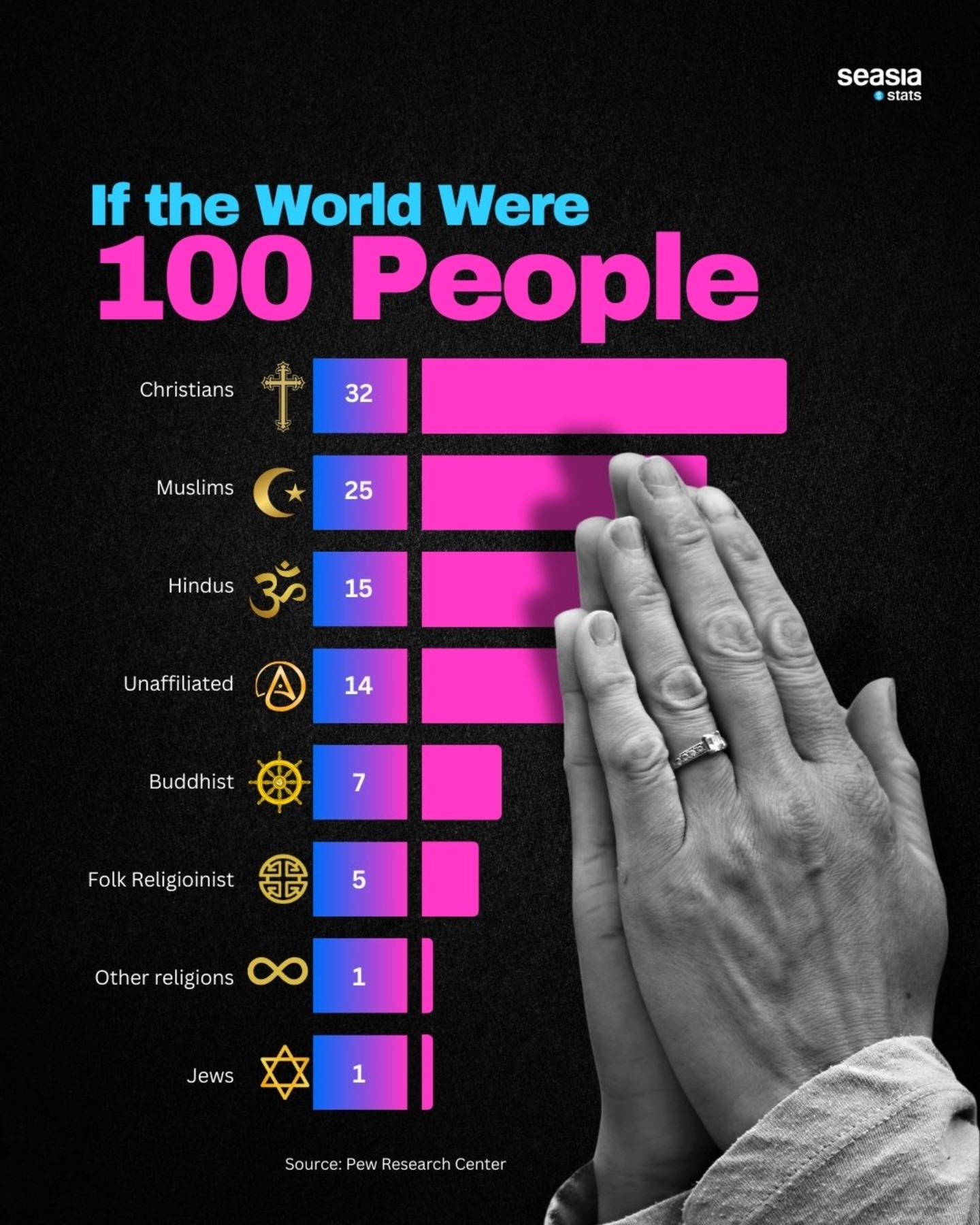Understanding the religious composition of the world can be challenging due to its vast diversity. However, a simplified model can provide a clear perspective on the relative size of different religious groups globally. Imagine a world with only 100 people—this model, based on data from the Pew Research Center, allows us to visualize the distribution of major religions in a more accessible way.
Christianity
At the top of the list, 32 people would identify as Christians, making Christianity the largest religious group globally. The religion, with its diverse denominations, has a significant presence in regions across Europe, the Americas, and sub-Saharan Africa.
Islam
25 people would practice Islam, showcasing its prominence worldwide. Islam ranks as the second-largest religion, with major populations in the Middle East, Southeast Asia, and parts of Africa and South Asia. It has seen rapid growth, especially in Muslim-majority regions.
Hinduism
15 people would be Hindus, with the vast majority concentrated in South Asia, particularly India, Nepal, and parts of Southeast Asia. Hinduism, one of the oldest religions in the world, plays a central role in the cultural and spiritual life of these regions.
Unaffiliated
In this simplified world, 14 people would be unaffiliated with any religion, a group that includes atheists, agnostics, and those who identify as secular or non-religious. The number of unaffiliated individuals has been rising globally, especially in more secular societies and urban centers.
Buddhism
With 7 people, Buddhism is another major world religion, although its global numbers are smaller compared to the others. Buddhism is primarily practiced in East Asia, Southeast Asia, and parts of South Asia. It emphasizes practices like meditation and mindfulness, making it an influential philosophical and spiritual tradition.
Folk Religions
5 people would follow folk religions, which include a wide variety of traditional beliefs often specific to particular cultures or regions. These beliefs often involve animism, ancestor worship, and local deities, and are especially prevalent in Africa, Asia, and Indigenous cultures around the world.
Other Religions and Judaism
In this model, 1 person would practice Judaism, the oldest of the Abrahamic faiths, with a global presence that remains significant, particularly in Israel and among Jewish communities worldwide. Additionally, 1 person would belong to other smaller religions, such as Sikhism, Bahá'í, Jainism, and Zoroastrianism.
Conclusion
This simplified breakdown of the world’s religions helps highlight the diversity of belief systems globally. Christianity and Islam dominate in numbers, while religions like Hinduism and Buddhism have strong cultural and spiritual significance in their regions. Meanwhile, the rise of unaffiliated individuals underscores a global trend towards secularism and non-religiosity. Traditional folk religions also continue to thrive in many regions, adding to the rich tapestry of human belief.
This model offers a strikingly accessible view of the world’s religious composition, showing just how varied and intricate the global religious landscape truly is.



















